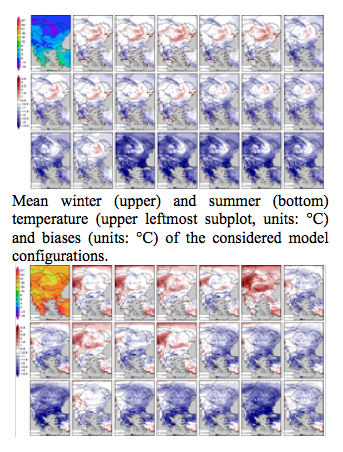Description of the problem
The Regional Climate Model system RegCM, originally developed at the National Center for Atmospheric Research (NCAR), is maintained in the Earth System Physics (ESP) section of the ICTP. The latest version of the model, RegCM4, is now fully supported by the ESP. It can be applied to any region of the World, with grid spacing of up to about 10 km (hydrostatic limit), and for a wide range of studies, from process studies to paleoclimate and future climate simulation. The study documents the performance of 20 different model configurations in representing the basic spatial and temporal patterns of the SE European climate for the period 1999-2009. Model evaluation focuses on near-surface air temperature and precipitation, and uses the E-OBS data set as observational reference. On the other hand the testing and tuning of the different physics parametrizations leads to the need for High Performance Computing and big disk space. At this stage we already prepared scripts, workflow and output data. The datasets present some meteorological and geographical variables from the model output STS files.
Response
A good opportunity for the implementation of this study it was given to us by using the Supercomputer System Avitohol at the IICT–BAS. Which is built with HP Cluster Platform SL250S GEN8 (150 servers), Intel Xeon E5-2650 v2 8C 2.6GHz CPUs (300 CPUs), non-blocking InfiniBand FDR, 300 Intel Xeon Phi 7120P co-processors and the storage is provided by a storage system with 96 TB of raw disk storage capacity. The workflow and some of the produced outputs was uploaded to be used by the community and the other partners of the project VI-SEEM on the repositories site which is hold by GRNET.
Results and future work
The differences in temperature biases are pronounced in winter, as well as in summer. The biases are negative in the southern part of the domain.
- Generally, the results for summer show bigger deviations from the model values.
- The warm summer biases are spread mostly in the northern part of the domain.
- The temperature biases are in the range from about -3.5°C to 3.5°C.
The necessary next step is to investigate more deeply, including on sub-seasonal basis, these model configurations, which shows overall better simulation capabilities. Using only optimal configuration can guarantee the model output reliability and increases the benefit of any model implementation.

